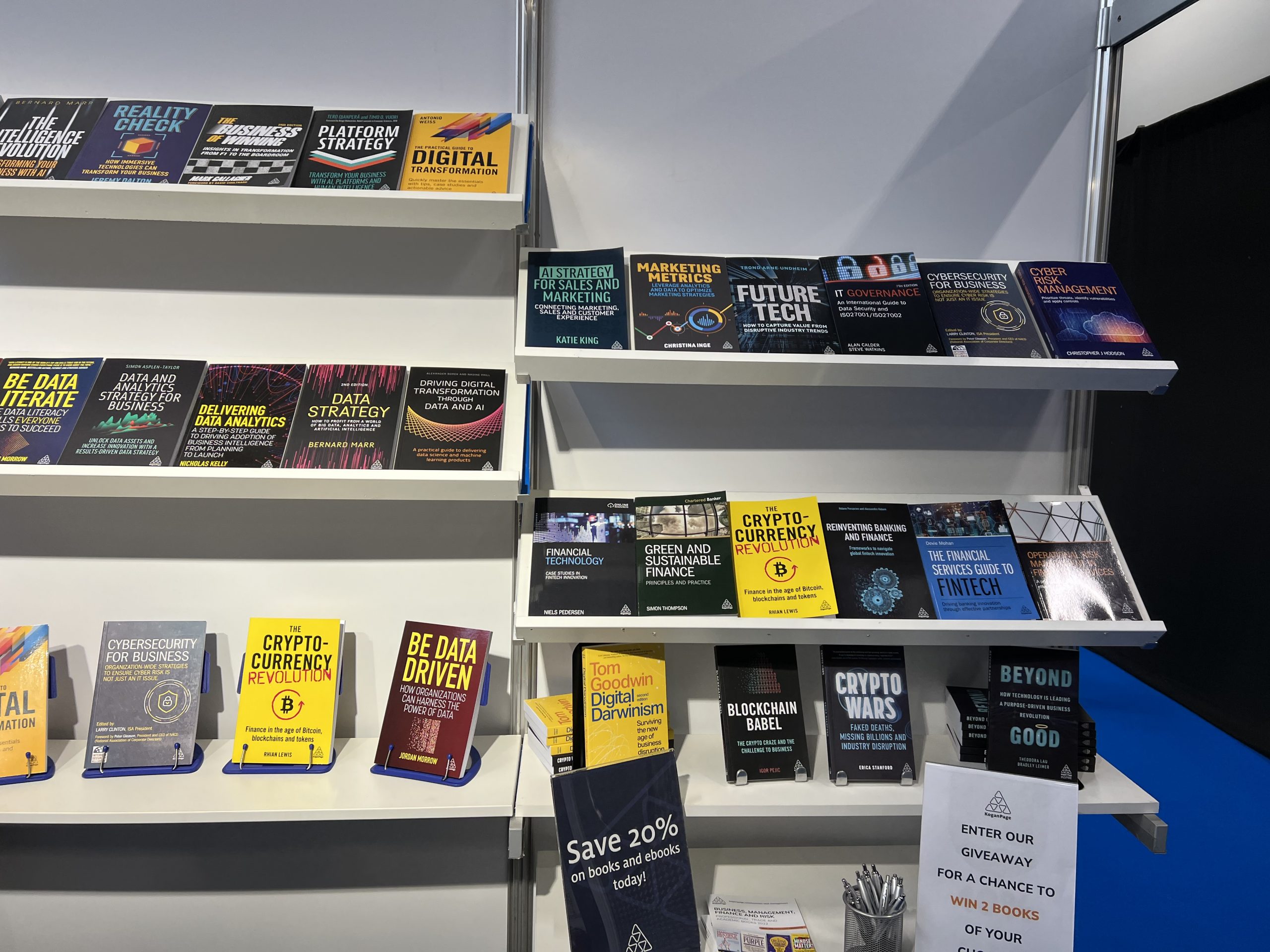Crypto Blockchain Displayed at TechEx Expo in London – Trustnodes

The winter freeze on London’s streets wasn’t enough to keep away the estimated 5,000 attendees at the tech show on Thursday and Friday.
More than 100 speakers participated in five stages spread across the exhibition which also featured crypto and blockchain projects.
EOS is apparently still alive, although it never recovered this bull market to 2018 highs.
Our reporter was told that the community had rejected Block One, the startup that coded the blockchain. Block One had also been sued to return $1 billion.
In total, they sold an estimated $4 billion in eth in 2018, while the lawsuit is still ongoing.
However, there are not two EOSs, there is still only one EOS. It’s just that Block One has been replaced with the EOS Network Foundation.
Stuarts Law had set up a stand. They are a law firm in the Cayman Islands that has now expanded into offering crypto advice.
They have served about 200 crypto projects, said Chris Humphries, CEO.
It was mostly for company formation in the Cayman Islands where there are no taxes, but some had worked with security tokens (STOs).
Venly, a crypto wallet you may not have heard of, nevertheless claims 3 million users and $1 billion in assets under management.
They also claim that the crypto in their custody is insured, and recently announced that they are working with Stripe for crypto transfers.
Deepcoin, which does not have its own coin, boasted 175x leverage of crypto on their BitMex-like exchange.
This little-known exchange also claims more than one million users, but we were told that it doesn’t need any licensing because it only deals in crypto, no fiat exchange.
We were also told that Sam Bankman-Fried can’t happen here because they recently created a proof of reserves, but that’s just a snapshot in time. The content can of course be changed after the snapshot or at any time.
A new blockchain was exhibited called Radix. It only has 100 validators, but interestingly they claim that they plan to launch sharding in 2024, just two years from now. State cutting.
The founder, Dan Hughes, was asked how he plans to crack staking when Vitalik Buterin, ethereum’s co-founder, could not.
He stated that he didn’t think Buterin couldn’t crack it, he just couldn’t maintain backwards compatibility.
The problem, as pointed out, was connecting these shards as in the design that ethereum’s sharding had, it would take too long to move assets from shard A to shard B.
Hughes said his plan was to have three shards. Validators within each of these shards must first agree on the state of the blockchain, and through this agreement you get atomicity, he argued.
He also tried to demonstrate a prototype of Twitter running on Radix. It didn’t quite work at the fair, but they’ve apparently also cloned Youtube.
Easy to do. Difficult at the same time as decentralization is maintained. But good luck to Hughes with cutting, although we don’t quite expect any results.
There were also some blockchain-specific firms. When asked why they use a blockchain instead of a database, the main answer was security, which can be important for a company like Leonardo that works in defense.
The crypto and blockchain section of the exhibition was quite populated. You wouldn’t know from that that we are in the depths of a bear market, with new projects continuing to try to tokenize like Kodo, which tokenizes real estate.

The most interesting takeaway from this exhibit, however, was the people.
In particular, a representative from Keeper, who is more password management and was in the Cybersecurity section, said he was glad he was asked about crypto because no one had asked him yet, even though he works in security.
I have crypto, he casually mentioned, and they plan to launch a crypto wallet soon.
Another startup, lost somewhere in the many business cards, tried to get rid of passwords and replace them with fingerprints. That was the example given, although he said they offer other tools as well.
Working on an unnamed crypto project, they see crypto as a potential market after years of security for banks. I have crypto, he also said casually.
The reaction was very different to an IoT project. After explaining what all the tools were, the representative was asked if this has anything to do with the blockchain.
No, he said, nothing to do with blockchain, nothing, I hate blockchain. His thick Irish accent made his response sound a little menacing, although it’s not so clear if he was angry at the blockchain or at the fact that he was unknowingly interrupted from eating his lunch.
The blockchain reaction was curiosity, although he was a seller with it quite unclear whether it makes it better or worse from a cultural point of view.
However, the crypto reaction was much more interesting because these cyber experts had crypto, but the public hadn’t really bothered to ask them about crypto.
Whether we can generalize from that is up to the reader, not least because the Keeper stand had been quite busy.
As a topic, security and crypto are kind of connected, so it would have been a natural topic to bring up, but the audience has clearly left.
What remains are the “experts”, or the more informed, the more knowledgeable, and dare we say, the more intelligent.
Entry to the exhibition was free, so this was the regular audience rather than suits.
On the other hand, the crypto section was quite busy. So the audience remains interested, just not hyped.
In some ways, that makes this the best time in crypto. Not least because this quietly productive construction period is now much wider in participation than a few years ago.
There was a time when these experts would have asked what is crypto if that subject had been casually brought up.
Now they seem to be either… excited isn’t quite the word, more like a common theme had been brought up. Yet they will still point out that they have crypto. It’s probably to let the listener know that they actually know what crypto is, and that they even have it.
Making it distinct from all other common topics like crypto is clearly still a new innovation.
However, the other reaction is the thick Irish accent. These are usually people who have basic information about crypto or blockchain, but not much else.
It is the ‘5 minute occasional crypto section on the news audience’. That’s probably all they know about crypto, just like those who work in the crypto industry only know the occasional headline when it comes to satellites or whatever.
However, the semi-aggressive reaction, even if only vocal, may be a cause for concern for this industry as we must not willingly allow this type of opinion to be formed for them, mainly by the mainstream media which tends to be very biased towards crypto.
Although two to one in this case is not a bad result. It was enough to disqualify Germany from the World Cup. Nevertheless, the crypto industry spends a lot on advertising. Some of it should go towards what we can call the crypto image.
We need to fight this bias in the mainstream media because we are past the point where it is only to be expected because they are uninformed.
At this point, they instead try to engage in opinion formation, and one way to effectively combat them is by also engaging in opinion formation through advertising.
That is probably the most important takeaway from this exhibition. The security architect likes crypto, while the seller hates the blockchain.
In other words, the upper class, the upper middle, and maybe even some of the middle, are cryptoing. The rest, perhaps 70% of the population, have either become opinionated or not interested.
For crypto to break through another 20%, more effective communication is needed both to reverse some of the common media conditioning and to answer the very important question: why crypto.
It’s a question that’s still being asked, but more internally during the opinion-forming phase, with the vast majority of the public likely to be indifferent rather than thickly Irish-accented.























